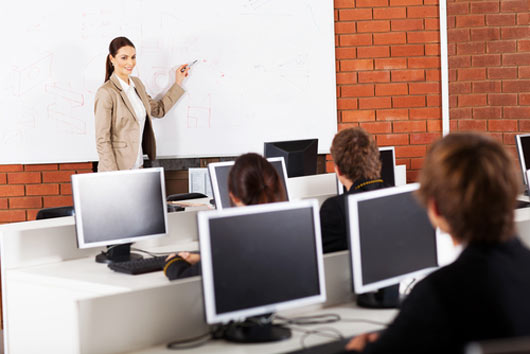
We’ve come a long way since the days of blackboards, mimeographed sheets and dog-eared textbooks. Many schools across the nation have wireless access and teachers and students use computers on a regular basis for learning, doing schoolwork and doing drills. But for all this new technology in the classroom, students and educators are still not using it to its full advantage.
A recent study conducted by the Center for American Progress has shed light on the fact that in many states, students use computers for drills and practice instead of for more intellectually engaging tasks. The study’s author, Ulrich Boser, a Senior Fellow at the Center, says that “Our findings suggest that many schools have yet to take full advantage of technology’s ability to improve the art of teaching and the process of learning.”
Read Related: Open Letter to the Class of 2025
This is a problem for our students because they are not prepared to compete globally. To do computer-assisted drills in math, reading and science is allowing students to do basic practice forms and not real critical thinking of the type that needs to go on in the classroom. But beyond what the students use the computers for, it’s important to keep in mind that the programs they are using, and how they are using them, does not seem to be taking advantage of the technology that is available.
In his study, Boser lays out a series of recommendations to improve school technology use. He said technology must promote key learning goals by rewarding innovative use of digital tools. Teachers need to get the training and resources necessary to use technology successfully and effectively. Meanwhile, schools must address the digital divide because the study showed that in many schools across the country, students from disadvantaged backgrounds were being given less engaging and less promising technology-facilitated learning opportunities.
The point is that it is not about having computers, wireless or tablet devices in the classroom, as much as it is how that technology is used. In public schools across the country, computers are becoming a substitute for real learning. Using computers for drill and practice is only an expensive substitute for worksheets. Boser’s study points out that nearly half of Florida and Louisiana middle school math students used computers for drill and practice compared to a quarter of students using them for spreadsheets and other statistical programs. In science class, 73 percent of students reported watching movies instead of actually using computers to develop science or thinking skills.
Computers and technology are a necessary tool in the classroom. But teachers and administrators need to look beyond using them as a crutch or a side tool to keep students busy or entertained. Yet in a school system that focuses on assessment test scores, it seems that using computers for drill and practice is the easiest way to prepare for these tests.
Politicians need to dump these assessment tests and help teachers and administrators find and implement the use of software programs that go beyond memorization, drill and practice. Computers should be used to engage students intellectually so they can develop critical thinking skills and prepare themselves for a prosperous future.











